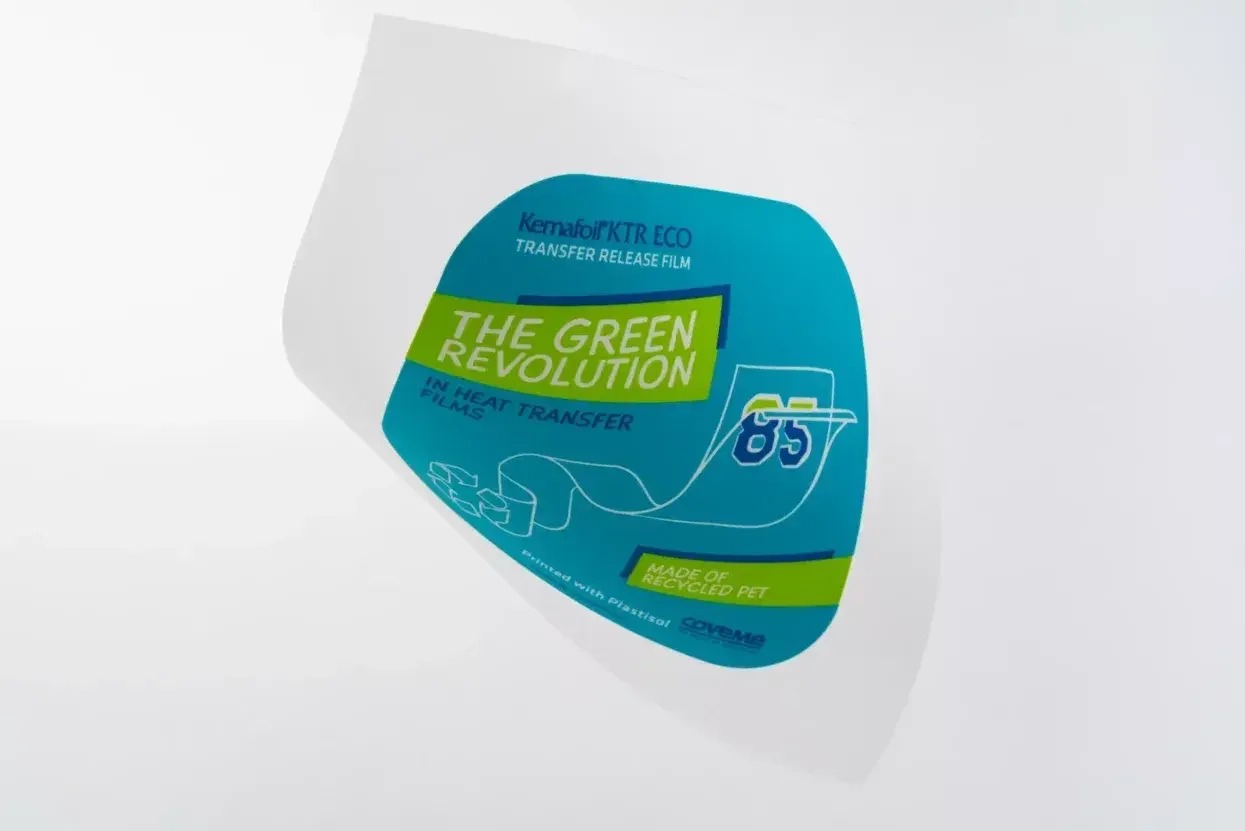
Stefano Fabozzi, Transfer Release Segment Product Manager from Coveme shares the importance of sustainability across transfer films.
It can feel hard to be focused on the future when you’re living through the existential crisis of a global pandemic. Like so many industries, Covid has given our garment printing customers some major challenges. Uncertainty and fluctuations in demand have made it virtually impossible to plan and forecast effectively, anticipate production volumes and manage material supplies, to say nothing of the impact on global supply chains and delivery timescales.
But, while we all steered our course through the crisis, at Coveme we also held onto the conviction that, on the other side, other more fundamental socio-economic concerns would come to the surface. We’ve kept our focus on sustainability, seeing this as one of the key drivers for the garment printing sector in the years to come. As a manufacturer and converter of polyester transfer and release films for screen and digital printing, which are fundamentally a ‘plastic’ product, the sustainability agenda will shape our future, as we believe it will that of our customers.
Sustainability is not straightforward. In any industry, it may not be as simple as just removing plastic from a process entirely – because this can force compromises on performance, quality or longevity, all of which ultimately impact sustainability in other ways along the chain.
We believe that true sustainability lies in a multi-layered approach. First, to offer high performance materials that result in less waste for our customers. Film products don’t perform in isolation – they work in tandem with a diverse range of inks and substrates, and with the printing process being used. We’re in a market which is being transformed by the many different vendors and technologies trying to introduce themselves to transfer printing, from dry toner and digital offset to inkjet.
The most fundamental way we can support garment printers to operate more sustainably is to develop a portfolio of films that perform properly with this array of processes and for different applications, and deliver the expected image quality, with strong resistance to washing, scratching and fading.
Secondly, the garment printing sector needs to look at chemical usage and seek to eliminate unnecessary chemicals or to switch them for more benign alternatives. We’ve focused on removing chrome stearate (which is the global standard as a release agent) from our coatings, as well as getting rid of formaldehyde and phthalate. Our KTR range of green transfer films offers customers the first step on a journey to better sustainability.
Thirdly, we must look at the raw materials that go into our films and seek recycled alternatives. So we’re committed to looking for ways of incorporating recycled polyester into our products to reduce the amount of virgin polyester we use. But this has required an incremental approach, because customers expect that the recycled product should perform the same as the virgin alternative. For example, we have to be sure that the use of recycled material won’t cause the film to shrink, which could then have a negative impact on register.
The outcome of our commitment to equivalent performance is that 99% of customers would not notice any difference between our recycled product and the non-recycled alternative. So far, I’m proud that we’ve been able to bring a 70% recycled product to the market, and our stated aim is to achieve 100%.
Across our sector, price does risk being an obstacle to adoption of recycled films. It’s counter-intuitive for customers that a recycled product doesn’t cost less than a virgin product, but this is because of the comparative cost of the recycled raw materials. I think the garment printing industry needs to work together to help service providers and end consumers to better understand the circular recycling economy and, ultimately, to prioritise sustainability over cost.
We’ve taken our own step in this direction with our own ‘cradle-to-cradle’ waste collection scheme, converting our own and our customers’ scrap polyester material into new KTR film.
To achieve real change, as a sector we need to move away from the era of greenwashing and commit ourselves fully to the sustainability journey, which means working towards a scale economy for recycled materials and developing viable business models that enable every link in the supply chain to thrive.
As we head into the first live FESPA event since 2019, I feel positive that the pandemic will have been a force for change on sustainability. The trend to digital or hybrid production continues, and I’m confident this will have positive outcomes for sustainable production, allowing brands to print smaller batches of garments economically, with significantly shorter time to market.
Suppliers like Coveme have not stopped innovating, and visitors to FESPA Global Print Expo 2021 will find many new products that will be fundamental to their progress towards more sustainable production.
And I believe that many speciality printers will have had the opportunity to stand back from their old ways of working and think about how they would like the future to look, with efficient, streamlined production, reduced waste, enhanced awareness of the whole product lifecycle, and a focus on delivering a durable, quality product that doesn’t cost the earth.
You can find Coveme’s sustainable film products in Hall 1 on Stand E92 at FESPA Global Print Expo 2021. Not registered yet? Use code FESM126 to save €30 on your entry: https://www.fespaglobalprintexpo.com/why-visit/registration